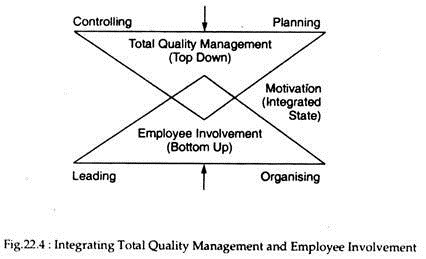The modern view of management is that it is the creation and continuous improvement of organisational systems that — when used by organisational members — lead to increased value for the customers of its products or services. Continuous improvement is required in an internationally competitive world characterised by rapidly changing technology and customer demand for higher levels of value.
Continuous improvement refers to the constant refinement and improvement of products, services, and organisational systems to yield improved value to customers. The term continuous improvement is derived from the Japanese term Kaizen, meaning small but continuous improvement.
The modern view of management is that management does not refer to the behaviour of a manager whose primary role is to maintain the status quo. Nor does it refer to managerial behaviour that is focused primarily on planning, on organising, on commanding, or on controlling the behaviour of others.
Such a traditional definition tells us what managers do without telling us for what purpose they engage in such activities. To be sure, managers do serve such functions. However, this classic definition misses the purpose of management in the 21st century, which is to provide increased value to customers.
ADVERTISEMENTS:
The new definition is a pronounced shift away from the old “command and control” connotation of the “M” word (management).
Modern writers seek to integrate Total Quality Management (TQL) with the traditional functional approach to describing management needs to be explored.Employee involvement refers to the participation and involvement of employees in their jobs in order to increase the value provided to customers.
The figure shows how the classic managerial functions of planning, organising, leading, and controlling are now shared with nonsupervisory employees in a TQM organisation. Classical models of management segregated the four functions as strictly the purview of managers.
ADVERTISEMENTS:
In Fig. 22.4 TQM is a model for deciding what is important to work on (customer value and system process improvement), while employee involvement is a model for deciding how to go about working on these objectives.
